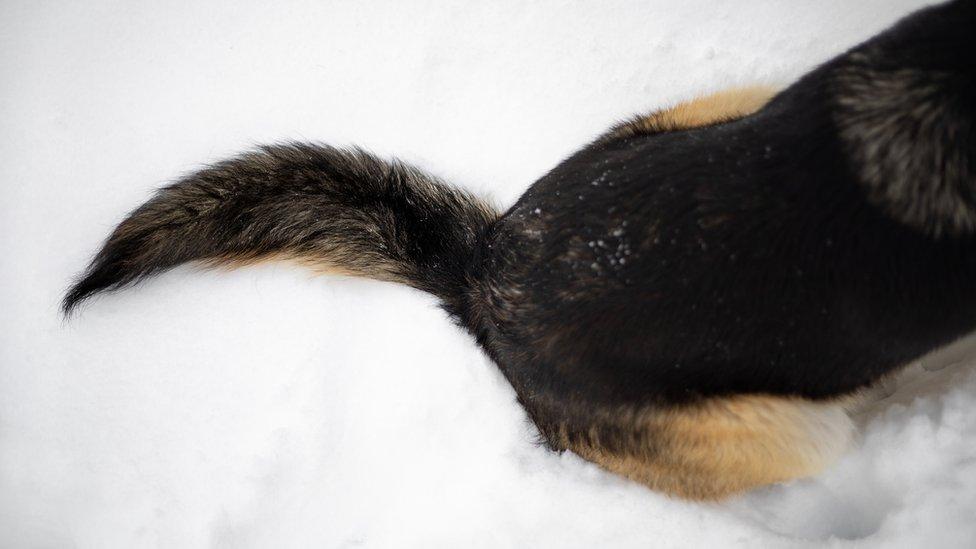Why do dogs wag their tails?
- Published
- comments

Have you ever wondered why dogs wag their tails?
Experts believe one reason could be because human owners like the rhythm of the tail wag so much, that they've bred breeds of dogs that do it more than others.
Scientists from the Max Planck Institute for psycholinguistics in the Netherlands and the University of Rome looked at lots of previous research that has investigated tail wagging and found that dogs do it much more than other species they're closely related to, such as wolves.
There is archaeological evidence to show that dogs were the first animals humans had as pets more than 30,000 years ago, originally kept as wolves that were domesticated and lived among people as working pets in early settlements.
All modern dogs are descendants of wolves and throughout history dogs have been kept as pets by civilisations such as the ancient Egyptians and the people of the Roman Empire.
In the wild, dogs wag their tails to help swat away flies, it also helps with balance, but the researchers write that tail wagging among pet dogs may be seen more often because humans have a preference towards breeds that show "tameness or friendliness toward humans."
The experts pointed out that a study of foxes from 25 years ago, found that when several generations of the animal and their cubs - that showed tameness towards humans - were bred, the foxes ended up behaving much like dogs, including more tail wagging.
As for the reason why owners react positively to tail wagging, the scientists explain that humans are good at picking up rhythms and often enjoy them, because they trigger parts of the brain related to pleasure.
The experts who wrote the research paper have now asked the scientific community to do more research into dogs tail wagging, including whether it comes from instincts at birth or if it's a learnt behaviour and if it changes as a dog ages.
